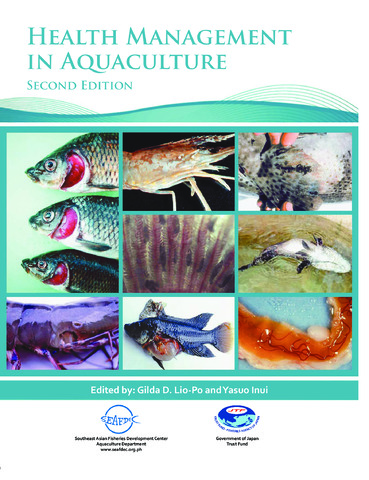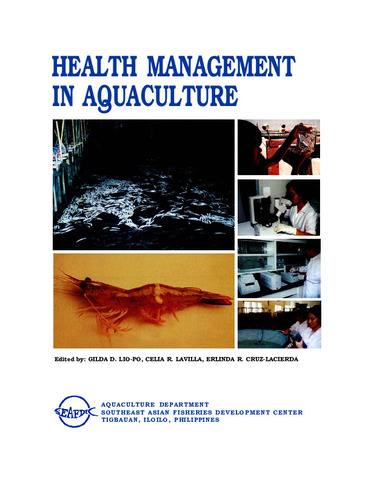Advances in diagnosis and management of shrimp virus diseases in the Americas
- Global styles
- MLA
- Vancouver
- Elsevier - Harvard
- APA
- Help

View/
LightnerDV2002-Advances-in-diagnosis-and-mgmt-of-shrimp-virus-diseases-in-the-Americas.pdf (662.4Kb)


Downloads: 3,417
Date
2002Author
Page views
5,053ASFA keyword
AGROVOC keyword
Metadata
Show full item record
Share
Abstract
The most important diseases of cultured penaeid shrimp, in terms of economic impact, in Asia, the Indo-Pacific, and the Americas, have infectious etiologies. Although diseases with bacterial, fungal, and parasitic etiologies are also important, certain virus-caused diseases stand out as the most significant. The pandemics due to the penaeid viruses WSSV, TSV, YHV, and IHHNV have collectively cost the penaeid shrimp industry billions of dollars in lost crops, jobs, and export revenue. Although not as sudden nor as catastrophic in their onset and course, certain bacterial, fungal, and parasitic diseases of shrimp have also been responsible for very significant production losses, and the relative importance of many of these diseases should not be discounted.
The social and economic impacts of the pandemics caused by WSSV and TSV have been especially profound in the Americas, and in the wake of these viral pandemics the shrimp culture industry has sought ways to restore the industry’s levels of production to the “pre-virus” years. Central to improving disease) prevention and management strategies is the incorporation of the concepts of biosecurity into shrimp farm design and operational strategies. Disease management in shrimp aquaculture is an important component to biosecurity of farms and to the sustainability of individual farms, shrimp farming countries, or entire geographic regions. The first step in disease management requires the availability of accurate and reliable diagnostic methods and knowledge of the biology of the diseases of concern. The recognition of the need for biosecurity and disease management in the Americas is reflected in the recent proliferation of shrimp disease diagnostic laboratories in the Americas. Where there were only a handful of shrimp disease diagnostic laboratories a decade ago, there are 40 or more such laboratories serving the industry today.
Diagnostic methods may be applied to determining the cause of disease(s) that are adversely affecting the culture performance or survival of farmed shrimp stocks or they may be used for surveillance purposes to screen for the presence of specific pathogens in otherwise healthy shrimp for the purpose of disease control. As diagnostic methods have improved and become more widely available, the interest in culturing specific pathogen-free (SPF) shrimp stocks in biosecure facilities has increased markedly in many regions in the Americas. The methods being used in shrimp disease diagnostic laboratories in the Americas were recently surveyed. Of the 40 laboratories contacted, 27 responded to the survey. Approximately 75% of the labs responding to the survey provide diagnostic services using both molecular (PCR, RT-PCR and gene probes) and classical (routine histology and microbiology) methods, while nearly all (93%) of the diagnostic labs offer diagnostic testing and screening services based on molecular methods (i.e. assays with gene probes and PCR/RT-PCR).
Suggested Citation
Lightner, D. V. (2002). Advances in diagnosis and management of shrimp virus diseases in the Americas. In Y. Inui & E. R. Cruz-Lacierda (Eds.), Disease Control in Fish and Shrimp Aquaculture in Southeast Asia - Diagnosis and Husbandry Techniques: Proceedings of the SEAFDEC-OIE Seminar-Workshop on Disease Control in Fish and Shrimp Aquaculture in Southeast Asia - Diagnosis and Husbandry Techniques, 4-6 December 2001, Iloilo City, Philippines (pp. 7-33). Tigbauan, Iloilo, Philippines: SEAFDEC Aquaculture Department.
Type
Conference paperISBN
9718511601
Related items
Showing items related by title, author, creator and subject.
-
Health management in aquaculture
Lio-Po, Gilda D.; Inui, Yasuo (Aquaculture Department, Southeast Asian Fisheries Development Center, 2010-07)A textbook on diseases of cultured warmwater fish and shrimps in the Philippines. Eleven chapters cover essential information on the basic principles of disease causation, major diseases of cultured fish and crustaceans, ... -
Health management in aquaculture
Lio-Po, Gilda D.; Lavilla, Celia R.; Cruz-Lacierda, Erlinda R. (Aquaculture Department, Southeast Asian Fisheries Development Center, 2001)A textbook on diseases of cultured warmwater fish and shrimps in the Philippines. Eleven chapters cover essential information on the basic principles of disease causation, major diseases of cultured fish and crustaceans, ... -
Country status of aquatic emergency preparedness and response systems for effective management of aquatic animal disease outbreaks in Myanmar
Oo, Kyaw Naing; Cho, Yi Yi (Aquaculture Department, Southeast Asian Fisheries Development Center, 2019)Myanmar is one of the OIE members and the Department of Fisheries (DoF) is highly concerned with transboundary aquatic animal pathogens. Therefore, the Aquatic Animal Health & Disease Control Section has already been ...




